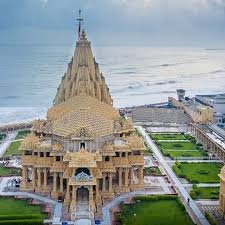Nestled in the heart of the mighty Brahmaputra River, the Umananda Temple stands as a symbol of divinity, history, and tranquility. Located on Peacock Island, the smallest inhabited river island in the world, this temple is dedicated to Lord Shiva and holds immense spiritual and historical significance. The serene surroundings, coupled with the temple’s ancient heritage, make it one of the most cherished religious sites in Assam. Read more about Umananda Temple Guwahati.
Whether you seek spiritual enlightenment, historical exploration, or a peaceful retreat, Umananda Temple offers an experience like no other. In this blog, we will explore the history, mythology, architecture, significance, and travel guide to help you uncover the beauty of this sacred site.
The Mythological Legacy of Umananda Temple
Like many ancient temples in India, Umananda Temple Guwahati has deep-rooted connections with Hindu mythology. The temple is primarily associated with Lord Shiva, who is revered here in the form of Bhayananda—the fierce and compassionate deity.
The Legend of Lord Shiva and Goddess Parvati
According to Hindu mythology, Lord Shiva meditated on this very island for deep spiritual enlightenment. It is said that Goddess Parvati, Shiva’s divine consort, accompanied him and wished to spend time in solitude with him. As a result, the island was named Umananda, where “Uma” refers to Goddess Parvati, and “Ananda” means bliss.
The Curse of Kamadeva
- Kamadeva, trying to awaken Shiva from his deep meditation, struck him with the arrow of love.
- Enraged, Shiva opened his third eye, reducing Kamadeva to ashes.
- This event made the island a sacred Shakti Peetha, symbolizing both creation and destruction.
The Architectural Beauty of Umananda Temple
The Umananda Temple reflects the stunning architectural styles of ancient Assam. The temple was originally built by Ahom King Gadadhar Singha in the 17th century, a great patron of Shaivism. However, after suffering damage due to an earthquake, the temple was later renovated by a local merchant in the 19th century, blending Assamese and Vaishnavite influences.
Key Architectural Features
- Intricately Carved Rock Walls – The temple boasts detailed sculptures of Hindu gods and goddesses, especially Lord Shiva, Goddess Parvati, and Ganesha.
- Vaishnavite Influence – Though primarily a Shaivite temple, the structure also features depictions of Vishnu and his ten avatars, showcasing the harmony between Shaivism and Vaishnavism in Assamese culture.
- Sanctum Sanctorum (Garbhagriha) – The inner sanctum houses the Shivalinga, where devotees offer prayers and seek blessings.
- Brahmaputra Viewpoint – The temple offers a breathtaking panoramic view of the Brahmaputra River, making it a perfect place for meditation.
Despite its small size, the temple carries a majestic presence, exuding peace and spirituality to all who visit.
The Spiritual Significance of Umananda Temple
The Umananda Temple is a sacred pilgrimage site, drawing devotees from across India.
Why Do Devotees Visit Umananda Temple?
- To Seek Lord Shiva’s Blessings – Devotees pray for peace, prosperity, and spiritual awakening.
- To Attain Love and Harmony – Due to its association with Kamadeva and Parvati, the temple is visited by those seeking blessings for a happy marriage.
- To Meditate in Tranquility – The peaceful atmosphere makes it an ideal spot for meditation and self-reflection.
The Vibrant Shivratri Festival at Umananda Temple
The temple is at its spiritual peak during Mahashivratri, the grand festival dedicated to Lord Shiva. Thousands of devotees flock to the island to offer milk, water, and bel leaves to the Shivalinga.
Apart from Mahashivratri, other important festivals celebrated here include:
- Shravan Month Puja – Every Monday in the Shravan month (July-August) sees an influx of Shiva devotees.
- Durga Puja & Kali Puja – Since the island is associated with Goddess Parvati, these festivals are also observed with devotion.
How to Reach Umananda Temple
Reaching Umananda Temple is an exciting journey, as the only way to get there is by boat.
Nearest Major Locations
- Guwahati Airport: 21 km (45-minute drive)
- Guwahati Railway Station: 5 km (15-minute drive)
- Kachari Ghat (Ferry Point): 1 km from Guwahati city center
Boat Ride to Umananda Temple
- Public ferries are available from Kachari Ghat, operated by the Assam Inland Water Transport.
- The ferry ride takes 10-15 minutes, offering scenic views of the Brahmaputra River.
- Private boats are also available for a more personalized experience.
Best Time to Visit Umananda Temple
- October to April: The weather is pleasant, ideal for sightseeing and temple visits.
- During Mahashivratri (February-March): The grand celebrations make it a divine experience.
- Monsoon Season (June-August): Avoid visiting, as boat services may be affected by heavy rains.
Nearby Attractions to Explore
If you visit Umananda Temple, make sure to explore other nearby attractions:
- Kamakhya Temple – One of the 51 Shakti Peethas, located on Nilachal Hill.
- Assam State Museum – A great place to learn about Assam’s history and culture.
- Navagraha Temple – A temple dedicated to the nine planets, offering astrological significance.
- Srimanta Sankardev Kalakshetra – A cultural hub showcasing Assam’s rich heritage.
Conclusion: A Spiritual Oasis in the Brahmaputra
The Umananda Temple on Peacock Island is more than just a religious site; it is a spiritual sanctuary, a historical marvel, and a nature lover’s paradise. From its rich mythology to its stunning architecture, every aspect of the temple speaks of divinity and peace.
Whether you are a devotee seeking blessings, a traveler exploring heritage, or simply someone looking for a serene escape, Umananda Temple is an unmissable experience in Guwahati.
So, the next time you visit Assam, take a boat ride across the Brahmaputra and immerse yourself in the divine aura of Umananda Temple—a place where Shiva’s presence and nature’s beauty blend harmoniously. 🚩





